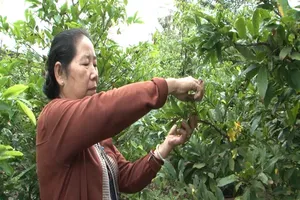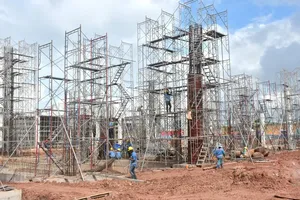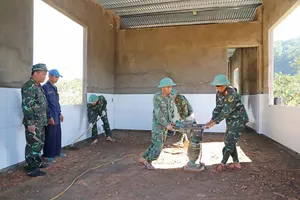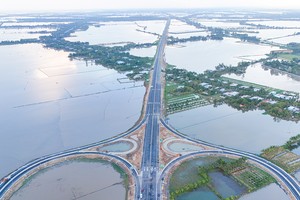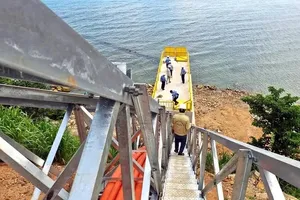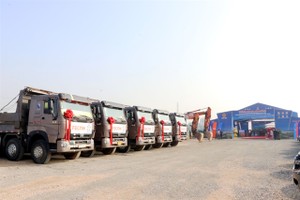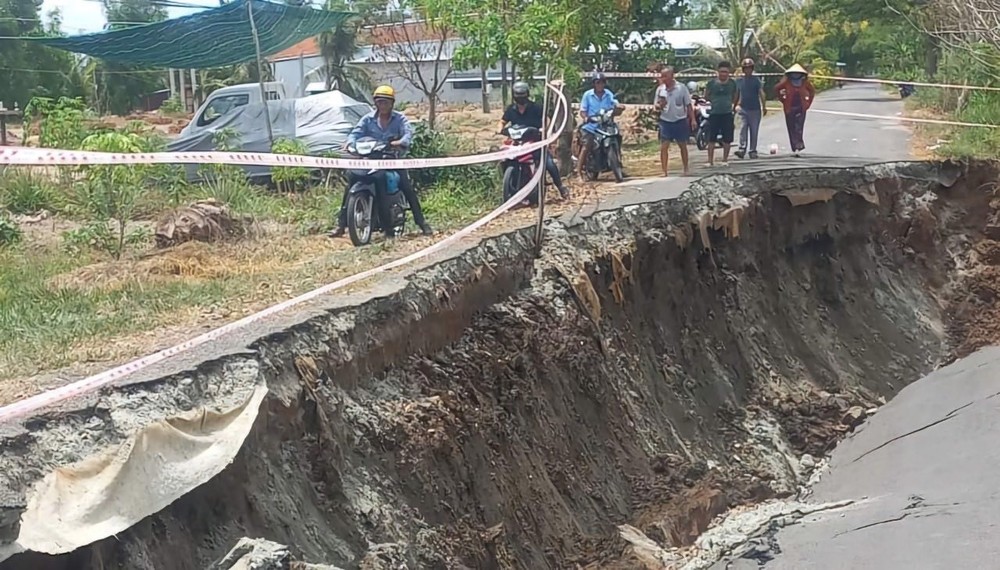
Each year, the Mekong Delta region experiences hundreds of subsidence incidents, and many major urban areas frequently face flooding; hundreds of thousands of households lack access to clean drinking water; diseases emerge due to the use of polluted water. Even more concerning, the Mekong Delta is at risk of gradually sinking due to the combined effects of land subsidence and rising sea levels.
High risk of submersion
According to Associate Professor - Dr. Le Anh Tuan, former Deputy Director of the Research Institute for Climate Change at Can Tho University, shallow groundwater in many areas of the Mekong Delta has been depleted due to excessive extraction. Groundwater at a depth of around 120 meters is also being heavily exploited but is difficult to replenish from surface water sources. This is the primary cause of the rapid subsidence in the Mekong Delta. Data from the Ministry of Natural Resources and Environment indicates that over the past decade (2012-2022), the average rate of land subsidence in the Mekong Delta has been 0.96 centimeters per year, three times faster than the rate of sea-level rise (approximately 0.35 centimeters per year). The depletion of groundwater has led to numerous consequences and a series of dangerous impacts, including saltwater intrusion and flooding.
In Can Tho City, the heart of the Mekong Delta, many inner-city areas have frequently experienced deep flooding in recent years due to subsidence. Tran Van Huong, 62, residing in Ninh Kieu District, Can Tho City, noted that three years ago, streets such as Huynh Cuong, Tran Van Hoai, Ly Tu Trong, and Nguyen Van Cu (Ninh Kieu District) only flooded during heavy rains or high tides. Now, even light rains cause flooding. "The authorities have installed tidal gates at river outlets and upgraded the drainage system on many streets, but Can Tho City is still deeply flooded, and the flooded areas are expanding," Huong said worriedly.
According to a research report published in the scientific journal Science on May 6, 2022, led by Professor Matt Kondolf (USA) and top scientists from various countries, the Mekong Delta in Vietnam could be below sea level by the end of this century if urgent actions are not taken across the entire basin. Current development practices could submerge 90 percent of Vietnam's vital agricultural economy, affecting over 21 million people and causing significant national and global impacts.
Professor Nguyen Minh Quan from Can Tho University provided a detailed analysis: Over the past two decades, the construction of hydroelectric dams, artificial reservoirs, and water diversion projects along the mainstream of the Mekong River has directly contributed to the current water security crisis in the Mekong Delta. These projects not only disrupt the water flow downstream but, more concerning, also compromise water quality, failing to meet the requirements for livelihoods, development, and ecological preservation.
Specifically, the alluvium of the Mekong River is consistently trapped as it passes through the tiers of hydroelectric dams. Projections indicate that, without intervention, the total alluvium volume reaching the Mekong Delta will decrease to only 5-7 percent (equivalent to 10-13 million tons per year). This alluvium amount is clearly insufficient compared to the minimum requirement of 120-130 million tons per year for fertilizing fields, alluvial deposition, and maintaining the coastline in the Mekong Delta. The estimated economic loss to Vietnam from alluvium loss is approximately US$120-205 million per year.
Natural disasters, human factors go hand in hand
The 2023 status report on the Mekong River by the Mekong River Commission reveals that the river's flow patterns are no longer natural. Specifically, flow levels are higher than average during the dry season and lower than average during the rainy season. The reduced flow during the wet season has led to a decrease in upstream flow in the Tonle Sap Lake, resulting in adverse effects such as increased salinity intrusion in the Mekong Delta region. Furthermore, sediment deposition throughout the basin, as observed at monitoring stations, has significantly declined, contributing to riverbank instability and coastal erosion.
Not only has the flow of the Mekong River changed, but the quality and quantity of water flowing downstream have also decreased. According to experts, the low water level of the Mekong River is due to drought and hydroelectric dams in upstream countries storing water. The reality suggests that in the future, the Mekong Delta will lose its flood season. Especially, it will experience severe and prolonged droughts during the dry season. In coastal areas of the Mekong Delta, such as Soc Trang, Bac Lieu, Ca Mau, Tra Vinh, and Ben Tre, the majority of water sources for people's daily use and production are groundwater. Due to excessive exploitation, the groundwater reserves in this area have significantly declined. On some islands and islets, freshwater pockets are now nonexistent.
In 2022, Soc Trang Water Supply Joint Stock Company alone extracted over 21.54 million cubic meters of water to supply approximately 97,600 customers. The average extraction capacity is about 67,400 cubic meters per day and night, sourced from 64 wells (14 deep wells and 50 shallow wells). Groundwater accounts for up to 90 percent of the extracted water. Meanwhile, in Ca Mau Province, Ca Mau Water Supply Joint Stock Company provided over 16.49 million cubic meters to serve 86,000 households in the same year. The total extraction capacity was 58,000 cubic meters per day and night, with 100 percent of the input water being groundwater.
Alongside water supply plants, millions of residents, facilities, and businesses in the Mekong Delta are also extensively tapping into groundwater for daily use and industrial purposes. In Hong Dan District (Bac Lieu Province), despite the availability of treated river and canal water for fish farming, many households still opt for groundwater pumped from wells to reduce costs and for convenience. In Ca Mau, due to being surrounded by the sea on three sides and the absence of freshwater sources from major rivers, treated tap water is only available in urban areas. Therefore, the majority of residents in the province have to dig wells and pump groundwater for daily living, industrial activities, and food processing.
Ms. Duong Thi Ngoc Tuyen, Head of the Department of Water Resources and Hydro-Meteorology at the Department of Natural Resources and Environment of Ca Mau Province, stated that recent research on groundwater by the Federal Institute for Geosciences and Natural Resources of Germany (BGR) in Ca Mau found no replenishment source for the province's groundwater. The ongoing extraction practices have been severely depleting groundwater reserves.
Master of Science Nguyen Huu Thien, an expert in Mekong Delta Ecology: Warns of subsidence in freshwater conversion areas
The dry season of 2024 is once again witnessing severe land subsidence in freshwater conversion areas, notably in the Tran Van Thoi area of Ca Mau. This severe subsidence occurred during the 2020 dry season in Tran Van Thoi (Ca Mau) and Go Cong (Tien Giang). The cause of this subsidence is that, during El Nino years with extreme drought, the rainfall from the previous rainy season is exhausted by the beginning of the dry season of the following year. This results in the drying up of internal canals, sometimes causing the canal beds to crack, leading to soil shrinkage and widespread subsidence. It is important to note that this subsidence within freshwater conversion areas is localized and not related to the overall land subsidence in the Mekong Delta caused by deep groundwater extraction.

